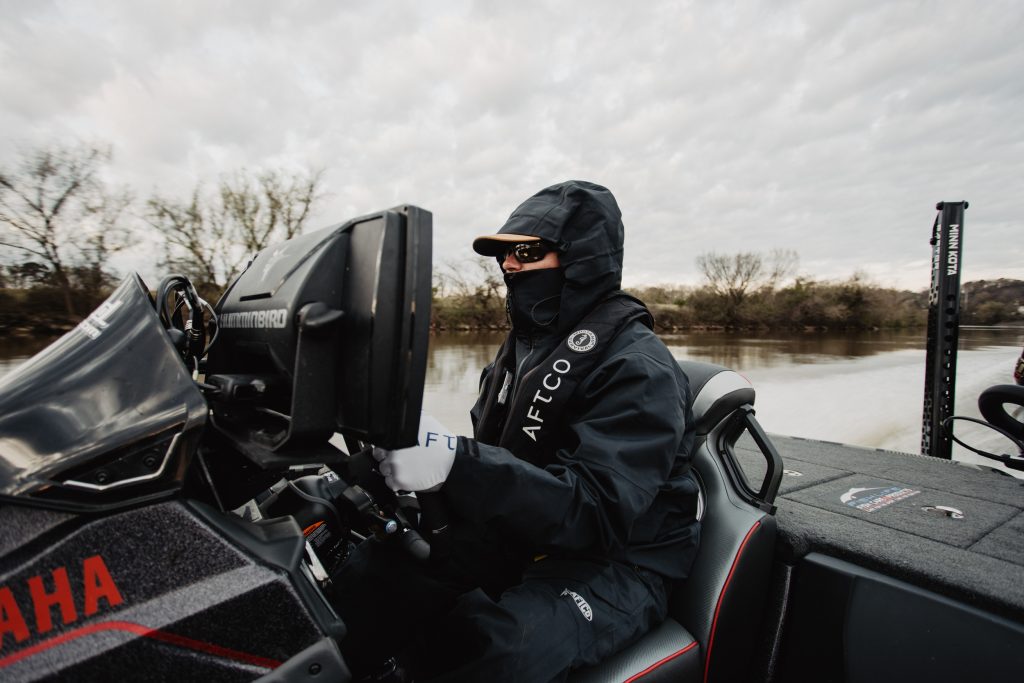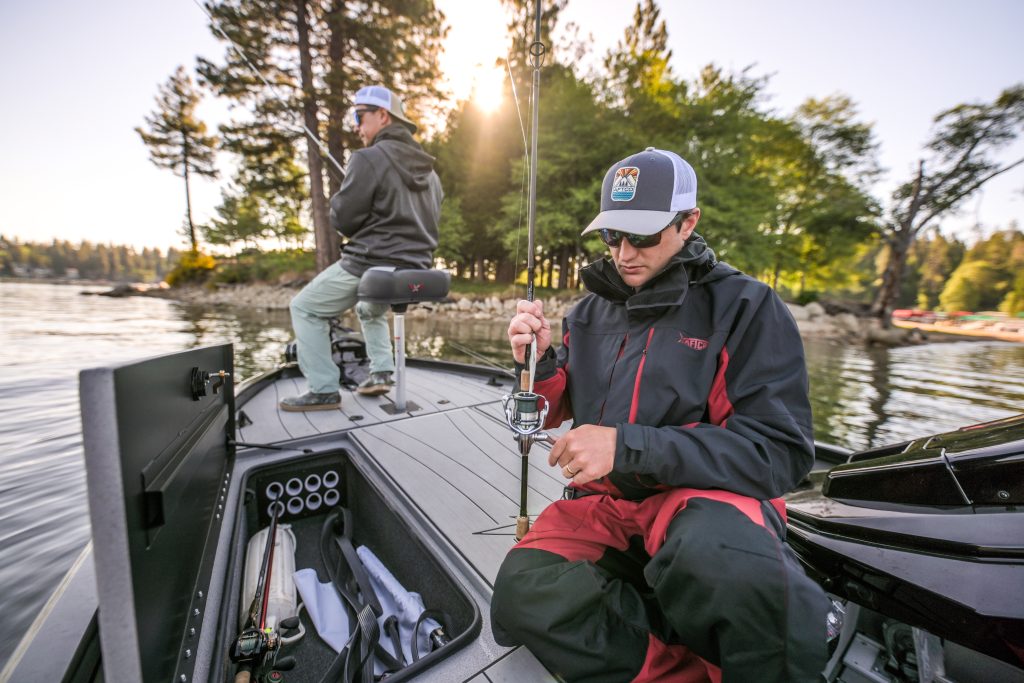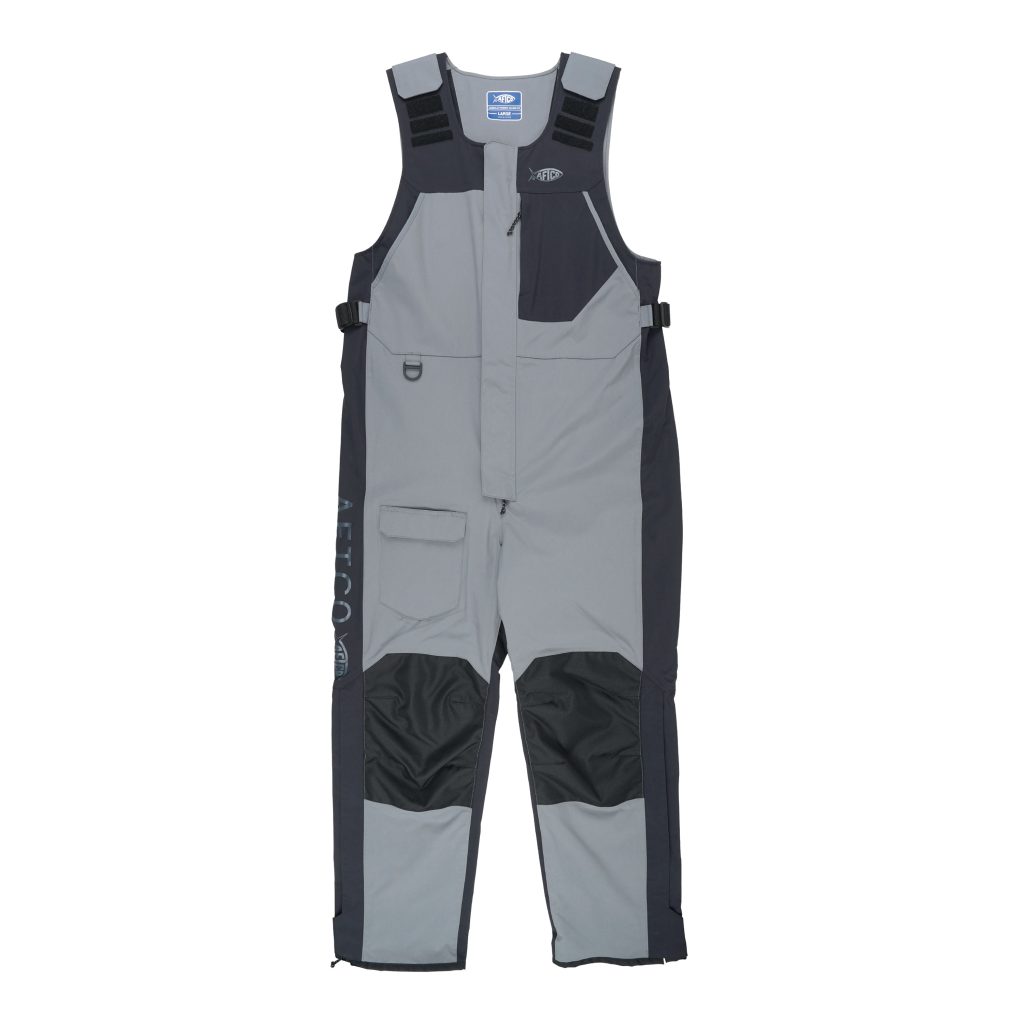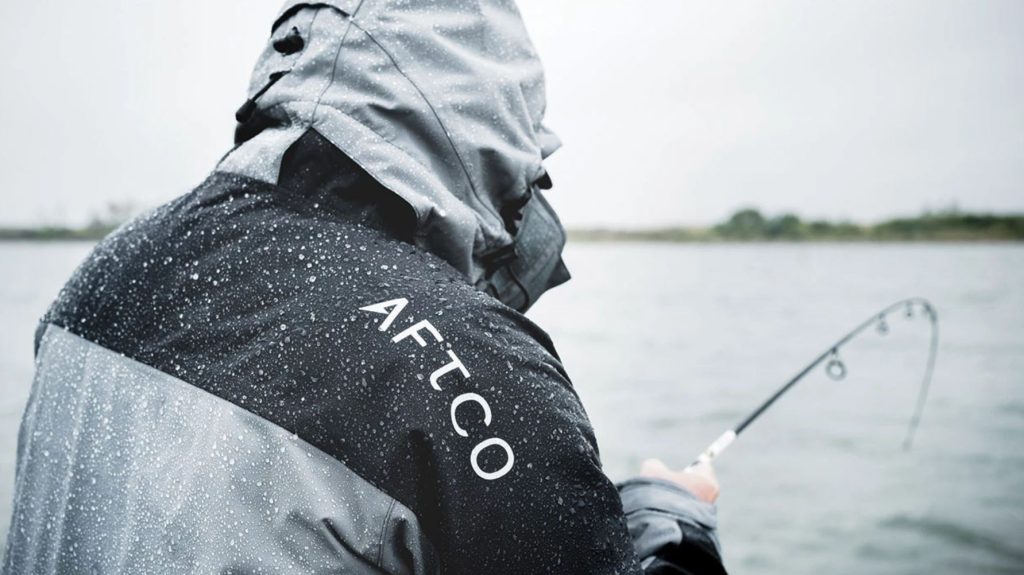Even in the South, boaters and anglers need good foul weather gear. Consider the advantages:
- Staying dry aboard means you can fish in weather when others stay home.
- You can fish earlier in spring and later in fall—or fish all winter on much of the Gulf Coast, as well as on lakes throughout the southeastern U.S.
- Even with sunshine and warmer temperatures, when fishing takes you into rough water it can get wet and wet can equal cold, unless you’ve got foul weather gear.
- You’ll stay comfortable on that first run at dawn, which can be chilly even in summer.
Matt Florentino, Marketing Director at AFTCO, a company which offers a full line of outdoor clothing, says the bottom line is that foul weather gear designed to keep anglers dry no matter what the weather is likely to make your fishing more comfortable and more fun, as well as more productive.
Having said that there are different levels of gear suited to varying conditions. The raingear that’s best for you will depend on how, when and where you fish, per Florentino.
What is “Water Resistant” Rain Gear?
Quality rain gear is, oddly, not one hundred percent waterproof like a sheet of rubber or a plastic trash bag. It’s technically “water resistant”, but that doesn’t mean a good suit won’t keep you bone dry.
The reason, Florentino said, is that the good stuff “breathes,” just a bit. That means it lets your sweat out, but doesn’t let rain and spray in.
Construction of these suits requires layered construction.

The outer shell, as you’d expect, is the one that keeps the rain and spray out but it’s very slightly permeable, so that the water vapor created by your body can escape.
Inside that outer shell, there’s at least one other layer. This layer is a waterproof breathable membrane. The outer side of this membrane is hydrophobic. That means it repels water if any gets in. The inner side is hydrophilic which means it attracts water.
In a quality rain suit, the fabrics work together to keep weather out while at the same time allowing enough of the sweat and vapor produced by your body to escape so that you don’t feel “clammy” or just slightly damp all day long.
Rain Gear Ratings
Rain gear typically gets two rating numbers, like so: 10K/7K.
“The first number refers to water resistance, the second to breathability,” says Florentino.
Water resistance in this context means the height of water, in millimeters, you could stack on a one inch by one inch section of the fabric before it started to seep through. A higher number means the material is more waterproof, but if you fish where rain and spray are usually a moderate issue, you may not want to max this number out because it can make a suit feel “clammy” as well as less flexible and comfortable.
A rating of up to 10K is enough to handle light to average rain for a short amount of time. Ratings between 10K and 15K can handle a moderate amount of rain for much longer, and jackets rated 15K and up are designed to keep out intense rain over a prolonged period.

“Wearing a jacket that’s not quite rated to handle the weather you are in would be a reason your jacket does not seem as waterproof as you’d like,” Florentino said. “It’s usually best to buy for the tougher conditions, even though that may be something that you only deal with now and then.”
Breathability
The second number of the water-resistance rating indicates how breathable a jacket is. Expressed in grams, it represents how much water vapor can move through one square meter of fabric, from inside to out, in a 24-hour period.
A 10K breathability rating means that 10,000 grams of water vapor will escape in 24 hours.
Breathability of 10K and down is for casual use where you’re not breaking a sweat applying to maybe an auxiliary suit you keep in the truck for rainy days.
Breathability ratings of 10 to 15 K are better for moderate activity, including most fishing trips on powerboats.
Breathability ratings above 15k are more suited for trips where you’ll be using a lot of energy, such as paddling or peddling a kayak, or repeatedly hauling up hundreds of feet of anchor line on an offshore reef fishing trip.
Gear with breathability that’s too low for your activity level, again, can make you feel clammy, but in this case the moisture is coming from the inside and can’t get out fast enough.
Features That Count
Florentino said that AFTCO makes rain gear at several levels for different applications.
“The Barricade line has three-layer construction, 20K waterproofing and 15K breathability at a competitive price,” Florentino said. (The jacket lists for about $250, the bibs for about $230.)
The jacket also has what the company calls a “SpeedVent” hood, which is designed to prevent ballooning when an angler takes off for a high-speed run down the lake or bay. Elastic hem cinches allow fitting the bottom of the jacket close to your legs, and the “Double Dry” cuffs prevent water from seeping up the arms while casting or handling gear.
Florentino noted that zippers are often a source of leaking on some rain suits exposed to heavy weather, but the Barricade lineup has YKK AquaGuard zippers, which include a heavy polyurethane exterior coating that functions almost like the top of a zipping food bag to lock spray and rain out. They’re also made of composite that won’t corrode in saltwater.

He said the Barricade line is primarily for moderate temperature fishing and boating and typical fishing in weather that’s occasionally rainy.
For those who routinely fish in heavy weather, a step up to the premium Barricade Elite line may be in order. The Elite series has 100% nylon four layer construction to keep you dry and warm, even in the harshest saltwater conditions. It’s rated at 30K waterproofing and 7K breathability, maximizing the ability to keep water out and still allowing some sweat to escape. Water-resistant zipping interior pockets give protection for smartphones, keys and wallet. The jackets are priced at $449, the bibs at $399.
For those who routinely fish in cold, wet weather, from 50 degrees on down, Florentino said that the best bet might be the AFTCO Hydronaut Insulated line. The fabric is two layers of nylon with a 30K waterproof rating, lined with a layer of polyester and a synthetic fill backing that adds lots of insulation without much added weight or bulk. The jacket lists for $269, the bib for $249.
For really cold weather, anglers can also add a lightweight Reaper Fleece Hoody under their rain gear, which can also be worn on its own on days that are cool but dry.
And for wear ashore or when nothing more than a bit of spray is likely the Ripcord Softshell jacket provides both warmth and enough water protection to prevent a soaking, with a 6k waterproof rating and a price of about $120.
Sizing for Rain Gear
AFTCO notes that their “Large” designation is a good fit for a guy who’s around six feet tall and weighing about 200 pounds. Of course, if you’re planning on a lot of cold-weather use, then buying a bit oversized may make sense to allow for multiple layers of insulating undergarments. They also offer “Big Man” sizes—the 4X is designed to fit anglers to 350 pounds.
Care Tips
If you fish saltwater, it’s a good idea to rinse your foul weather gear down with fresh water at the end of every day and hang it up. This not only gets rid of the crusting salt that makes the gear uncomfortable and protects zippers but also will allow it to dry so that you’re not putting on clammy rain gear in the morning.
Occasionally your gear will need a real wash to get rid of fish slime and other stains. Here’s AFTCO’s guide to doing it right:
The primary indicator that your outerwear needs to be cared for will be seen visually on the exterior of the shell. If you notice that your outerwear is no longer “beading up” and has begun soaking up water this is known as “wetting out”. This is the primary indicator that your outerwear is not performing to its full potential and requires care. The simple solution is to treat your outerwear with Nikwax and follow the instructions below:
Step 1 – Prep: Shake well before use. Use undiluted Nikwax Tech Wash and a sponge or soft nylon brush to treat stubborn stains before washing. Follow garment care label instructions.
Step 2 – Machine Wash: Place a maximum of six garments in the washing machine. Using cold water only, after the machine has filled, add: five fluid ouncedoz. / 150 ml for one to three garments, low water level. 8.5 fl oz. / 250 ml for 4-6 garments; medium water level of Nikwax Tech Wash.
Step 3 – Waterproofing: No need to dry garments before waterproofing. Air dry or tumble dry on a low setting.
On a protected work surface lay the clean wet garment flat. Hold Nikwax Spray-on bottle 15 cm/6 inches away from the garment and spray thoroughly.

Wait for two minutes, then remove any surplus product with a damp cloth. Check carefully to ensure no areas have been missed. Air dry for several minutes and the job is done.
DO NOT:
- Bleach – Colors will fade and can damage the DWR waterproof coating.
- Use Fabric Softener – Will clog the pores of technical fabrics and can damage the waterproof coating, minimizing the garments waterproofing and breathability.
- Iron – The heat may damage the performance of your technical fabric and potentially melt your garment.
- Dry Cleaning – Products used to dry clean could damage the technical features of your garment.
That’s it—given a bit of care, your quality foul weather fishing gear should give you years of service.




